Possible stupid questions here and I have searched for information on the forum and cant find anything about this.......I have an 08 MK5 Jetta '2.0 TFSI sport' as stipulated on information sticker in user manual. The badge on the back of the car is TSI. The engine cover has FSI. Does anyone know the facts about all of this. From the tables in the manual I know that the TFSI is 147kw. I could assume that the T is for turbo, but the FSI's also have a turbo as well and shown with less Kw in the manual. As they are both 2.0, What is the difference between the engines to make this power difference? I also dont even know for a fact that my car even has a turbo as you can't hear it, and I can't see it because I dont know how to take the engine cover off to look behind where it is located. Please can anyone shed some light here? Just to add I did read somewhere that the TSI ingine has timing chain rather than a timing belt, but this might only be on the newer models.
Above Forum Ad
Collapse
Announcement
Collapse
No announcement yet.
08 2.0 TSI or TFSI vs 2.0 FSI, Can anyone clear this up?
Collapse
X
-
08 2.0 TSI or TFSI vs 2.0 FSI, Can anyone clear this up?
Last edited by \/ VV chap; 01-06-2011, 03:38 PM.Tags: None
-
From memory, TSI = twincharger , FSI = NA engine and TFSI = Turbo only.
Then this all got too confusing as Audi were using the same names for different things so they dropped TFSI and have just gone with TSI for turbo engines now.
Options for engines and transmissions vary from country to country, but the Golf Mk5 is available with 4-cylinder petrol engines, and a new Pumpe Duse unit injector Turbocharged Direct Injection (TDI) diesel engine. Transmission options include manual, automatic, Tiptronic, and Direct-Shift Gearbox (DSG).
The GTI comes with VW's 4-cylinder 2.0L Turbo Fuel Stratified Injection (FSI) which makes 200 PS (147 kW; 197 bhp) and 280 N·m (207 ft·lbf) torque. Transmissions include a 6-speed manual or 6-speed DSG.
In September 2005, the Golf Mk5 GT was announced, which featured a choice of either 1.4 L petrol engine in twincharger (TSI) configuration, or a 2.0 litre TDI. Both are available as 125 kW (170 PS; 168 bhp) versions; while the diesel also is available as a 140 PS (103 kW; 138 bhp) variant in the UK. The 170 PS (125 kW; 168 hp) diesel has 350 N·m (258 ft·lbf) of torque, which is more than the range topping R32. The petrol engined offering contains the new Twincharger (TSI) engine, which is based on the recent Fuel Stratified Injection (FSI), but with a pair of chargers forcing the induction of the air. The chargers are a single supercharger that disengages after a specified rev-range, at which point charging of the air is handled by a single turbocharger. This system benefits from both of the efficiency of the supercharger in the lower rev ranges, with the longevity of the turbocharger higher in the rev range. This results in constant power delivery along the rev range, and better fuel efficiency than similarly powered V6 engine 2.4 L due to its small size. Both petrol and diesel versions are also available with DSG (Direct-Shift Gearbox). Performance figures for the petrol vehicle are 0-100 km/h (62 mph) in 7.9s (6 speed) and 7.7s (DSG), with the diesel taking 8.2s, and both reaching top speed of 220 km/h (136.7 mph).
-
More info here
TSI, an acronym used by Volkswagen Group for petrol engines featuring its "twincharger" (turbocharger plus supercharger) and Fuel Stratified Injection technologies; latterly, also used for engines featuring only a turbocharger and Fuel Stratified Injection
In 2000, the Volkswagen Group introduced its gasoline direct injection engine in the Volkswagen Lupo, a 1.4 L inline-four unit, under the product name "Fuel Stratified Injection"[25] (FSI). The technology was adapted from Audi's Le Mans prototype race car R8. Volkswagen Group marques use direct injection in its 2.0 L FSI turbocharged and naturally-aspirated four-cylinder engines. Later, a 2.0 L inline-four unit was introduced in the model year 2003 Audi A4.
Turbo fuel stratified injection (TFSI) denotes a type of forced-aspiration ("turbo") engine where the fuel is pressure-injected straight into the combustion chamber. FSI (VAG) direct injection technology increases the torque and power of spark-ignition engines, makes them as much as 15 percent more economical and reduces exhaust emissions[1].
Comment
-
FSI is Fuel Stratified Injection. It can have a turbo (What used to be called TFSI)..... or just be NA. Eventually, the dropped the F & called the turbos TSI. My Octavia has a TSI badge on the back & I assure you there is no supercharger.
The lower power 2.0 FSI engines do not have a turbo.
Easiest way to tell is go up a hill & put your foot down. 2.0FSI will be a bit pedestrian.carandimage The place where Off-Topic is On-Topic
I used to think I was anal-retentive until I started getting involved in car forums
Comment
-
That’s not a silly question at all and it is a testament to the confusion caused by VW chopping and changing of the nomenclature of their engines. Don't worry about not being able to hear the turbo, I never could in my Jetta but you sure can tell it's a turbo when you plant the right foot.Originally posted by \/ VV chap View PostPossible stupid questions here and I have searched for information on the forum and cant find anything about this.......I have an 08 MK5 Jetta '2.0 TFSI sport' as stipulated on information sticker in user manual. The badge on the back of the car is TSI. The engine cover has FSI. Does anyone know the facts about all of this. From the tables in the manual I know that the TFSI is 147kw. I could assume that the T is for turbo, but the FSI's also have a turbo as well and shown with less Kw in the manual. As they are both 2.0, What is the difference between the engines to make this power difference? I also dont even know for a fact that my car even has a turbo as you can't hear it, and I can't see it because I dont know how to take the engine cover off to look behind where it is located. Please can anyone shed some light here? Just to add I did read somewhere that the TSI ingine has timing chain rather than a timing belt, but this might only be on the newer models.
Specifically relating to the Jetta, when VW originally released the MKV Jetta in Australia, there were two petrol engines, FSI which was a 2.0 naturally aspirated which had a power output of somewhere around 110KW from memeory and the 2.0TFSI 2.0 turbocharged rated at 147KW. FSI stands for Fuel Stratified Injection referring to a system of flaps on the intake tract that create a specific type of turbulence and logically, TFSI stands for Turbocharged FSI.
Some of the original TFSI Jettas had no badge depicting which engine they had in them and others (like the one I had) was bagged 2.0 FSI, I think from memory that the naturally aspirated Jettas had either no badge or a 2.0 FSI (no red colouring) badge to differentiate from the turbo cars. Confusing isn’t it? You have seen nothing yet! LOL
Then VW introduced the 1.4 twincharger engine in the Golf which was designated TSI. I’m now not certain what the abbreviation stood for but it seemed to relate to the fact that the engine was both turbocharged and supercharged.
Just to add to the confusion relating to the badges on the Jetta, VW then changed the designation of the Jettas with the 2.0TFSI engine to TSI although as you pointed out, the engine cover is badged FSI, I think this was in 2007 or 2008 and may have coincided with the switch from Mexican to South African production of the Jetta for the Australian market and this is where it gets really confusing!
One time I had my Jetta 2.0TFSI in for service at a Sydney VW dealer and had a Jetta 2.0TSI loan car, upon returning the car the service advisor asked me what I thought of the 2.0TSI engined car before going on to tell me that it was a 2.0 twincharger engine (which of course does not exist), now if VW service advisors are saying this, it really underscores how confusing this all is.
I now own a 2009 EOS 2.0TSI, it is of course fitted with the same 2.0TFSI engine that the Jetta was fitted with and later EOS’s are fitted with a 155TSI (single charged) engine which is a different engine again, from memory this is the timing chain engine that you mention.
Clear as mud?06 Jetta 2.0TFSI Killed by a Lexus!
09 Eos 2.0TSI DSG Loved this car but has now gone to a new home!!
14 EOS 2.0 TSI has arrived!
Comment
-
You are 100% percent correct, TSI's doesn't actually stand for anything like FSI. It basically means T = Forced Induction(Turbo or Twin), S = Petrol, I = Injection. That's what I've been told from Nigel one of the trainers down at VGA. They wanted to get away from the FSI badge as there were a lot of issues with the style of injectionOriginally posted by brad View PostFSI is Fuel Stratified Injection. It can have a turbo (What used to be called TFSI)..... or just be NA. Eventually, the dropped the F & called the turbos TSI. My Octavia has a TSI badge on the back & I assure you there is no supercharger.
The lower power 2.0 FSI engines do not have a turbo.
Easiest way to tell is go up a hill & put your foot down. 2.0FSI will be a bit pedestrian.
Comment
-
Thanks for the information guys. So I'll put it down to the changes over the years. Brad I have found FSI's that have a turbo with the SI in red. So 'VW convert' may be on to something there. Thanks again.....I think if you put together what everyone knows you will come up with a final solution.
Comment
-
I can totally understand your confusion, vw did a poor job of distinguishing the turbo charged Jetta to its natural aspirated 2.0fsi sister. All the time I see people on carsales advertising their turbo Jetta's as non turbo FSI models
As someone else said, earlier model 2.0 Turbo were badged just as a 2.0 FSI, both the 2 black Jetta's below are 2.0t turbo's.
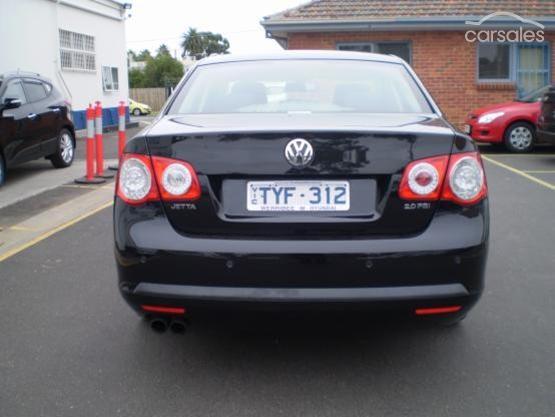
The later 2.0 Turbo adopted the red FSI so its easier to distinguish -
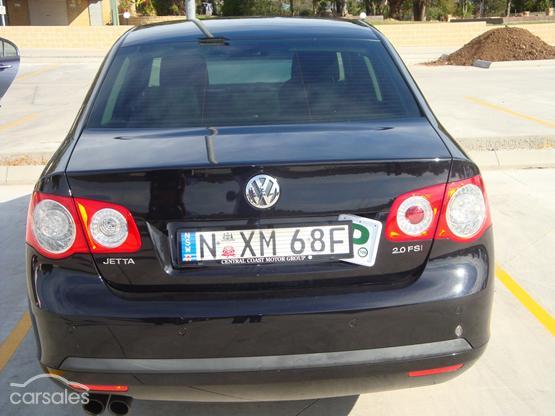
To make it even more confusing the 1.4tsi Jetta ( 118 ) is now badged just TSI -
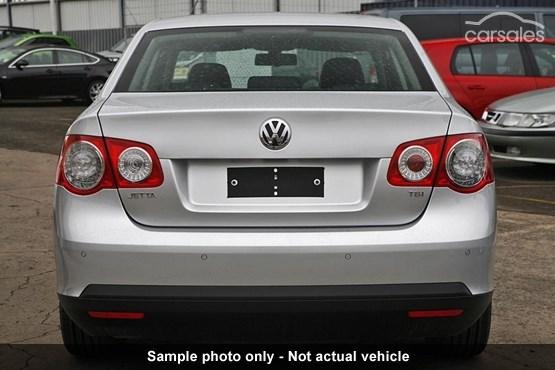
The easiest way to tell is by the wheels if you have the 17" wheels which look like this then you've probably got a 2.0 turbo
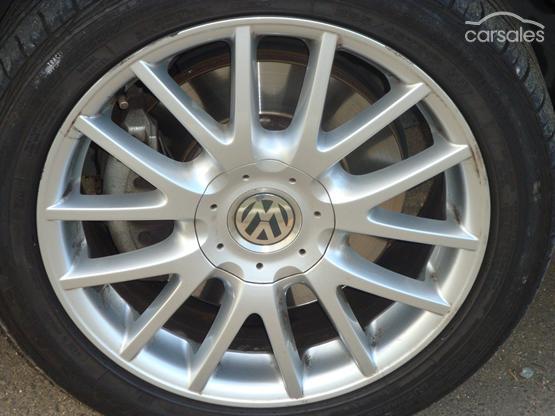
Also the engine block on the TSI ( 118 ) is a lot smaller in size -
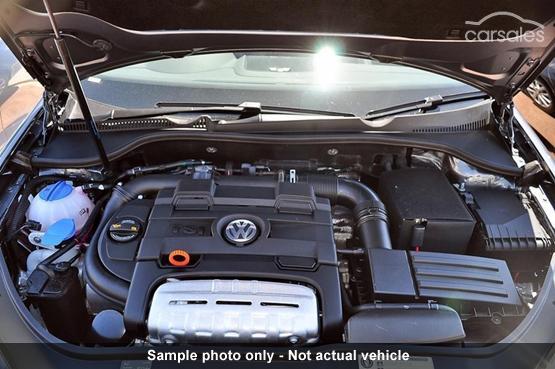
Can you tell I like using photo's to illustrate my points MKV GTI
MKV GTI
Comment
2025 - Below Forum
Collapse



Comment